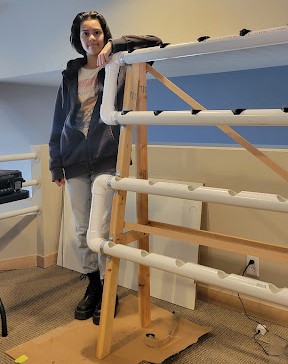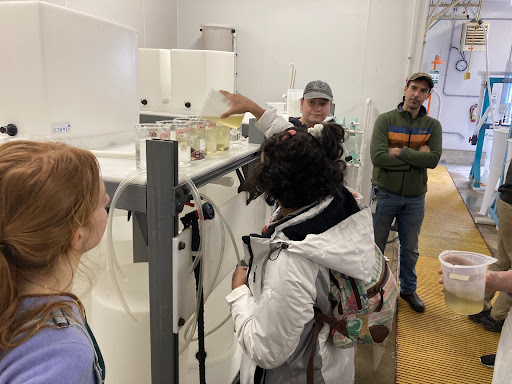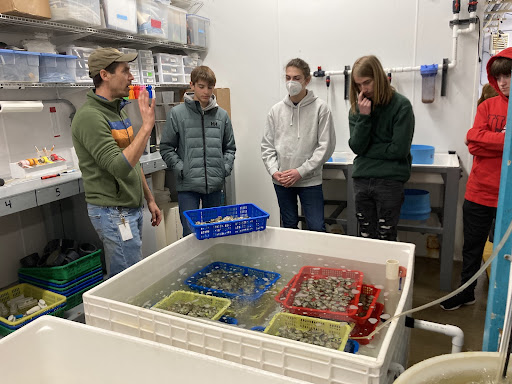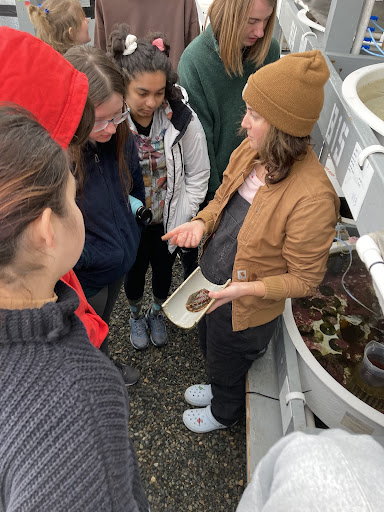Hyla Stories
Green Technologies
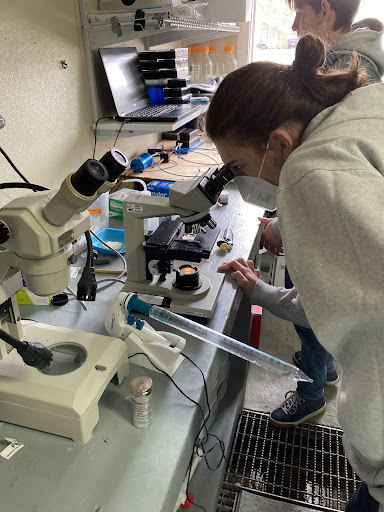
Co-designing cross-disciplinary curriculum with students.
By Brad Waugh, Hyla upper school teacher.
Hyla’s upper school Aperture program provides students and teachers the space to co-design curriculum, investigate themes of common interest and build knowledge across disciplines collaboratively. The Green Tech Aperture does this by weaving together ideas from the humanities, science and engineering to address current environmental challenges, helping students build a powerful and versatile toolkit to address a wide range of real world problems. Aperture courses are semester-long and happen three times each week.
The human-centered design thinking framework developed and championed by the Stanford Institute of Design (aka the d.school) provides an overarching schema to guide students throughout Green Tech as they look at case studies, tackle mini-challenges and complete a semester project. Other schema support them through key steps in the design thinking framework – students use the principles of appropriate technology to construct critical questions during the empathy and testing stages and apply bright spot analysis and biomimetics to foster innovative thinking during the defining and ideating stages.
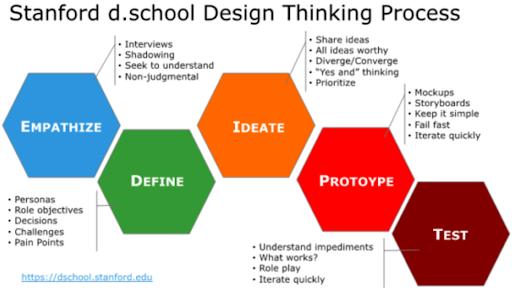
Ultimately, students apply these frameworks to projects of their own choosing. A small team of students designed and are in the final stages of building a vertical hydroponic garden, to be housed on campus. Another took on the challenge of designing and building a (small) child’s electric bike. In addition to these, everyone’s energy and enthusiasm this semester has been focused on a shared whole group project: “planting” a prototype clam and oyster garden. It is instructive to look at all the steps that go into a project of this scope:
- Ongoing background research on the indigenous and traditional scientific knowledge underpinning clam (sea) gardens. (Here are some links to this research if you are interested.)
- An online meeting with students from the Lach Klan School (Kitkatla, BC) on March 2, where our students heard directly from members of the Kitkatla community about the significance of clam and cockle sea gardens.
- A visit to the Kenneth Chew Center for Shellfish Research and Restoration on March 24, where students got a first hand look at the important work being done there and were able to ask questions related to their sea garden project.
- Participation in the shoreline working group at the BI Environmental Conference on March 25. They received enthusiastic support for their project from other attendees.
- “Planting” day for their sea garden of manila clams and Olympia oysters along a section of BI beach front is May 21.
- Ongoing monitoring of the garden will allow them to see the impact this has on biodiversity and water quality.
- On May 23 they will participate actively in baseline research supporting the Suquamish cockle restoration project.
As a result of the co-designed nature of Apertures, student learning is much more emergent than in core classes where the learning goals are typically well spelled out prior to the start of the course. One of the ways we address this difference is by asking the students to reflect on what they have learned during the course. Here are just a few examples of student feedback when we asked them, “What are the most important things that you learned in Green Tech?“
- “I learned how to use your resources and take action to accomplish a goal.”
- “I learned how to empathize and put people at the center of our solutions.”
- “I learned how to use mathematical and computational thinking to construct explanations of
- observed phenomena and design solutions to technical problems.”
- “I developed teamwork skills and an understanding of my and others’ abilities. I also learned
- how to be resourceful and get the most out of what we have.”
- “Green tech really brought back my interest in math after I lost touch with it during geometry last year, so I’m excited to dive deeper into math in real-life situations.”
It is a short but pretty impressive list and demonstrates the power of the Aperture program to build cross-cutting skills that will serve students in their future challenges, both academic and beyond.
Here are photos of various projects, labs, site visits, experiments, and collaborations in this Aperture course:

